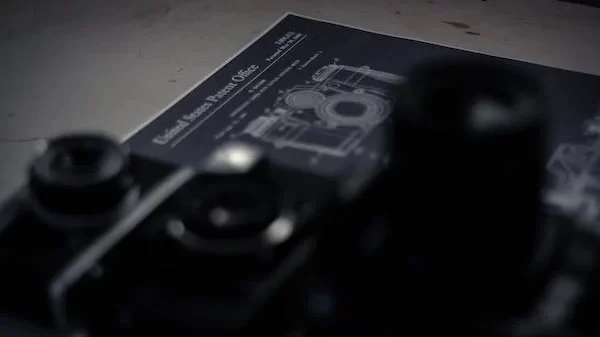“Lights, camera, action! When it comes to storytelling, books and movies are two beloved mediums that have captured the hearts of millions. But what happens when these worlds collide? From Harry Potter to The Hunger Games, we’ve witnessed some of our favorite books come to life on the big screen. Join us as we dive into the adaptation process and explore how filmmakers bring their vision from page to screen.”
Introduction to Books to Movies Adaptations
The book-to-movie adaptation is a process by which a film receives its source material from a preexisting novel, story, etc.
To successfully adapt a book into a movie, filmmakers need to consider several key elements. First, they evaluate the story’s suitability for the big screen, ensuring it retains its major plot points and themes. Next, they focus on developing well-rounded and engaging characters that capture the audience’s attention, often making modifications to the original text. Lastly, they strive to bring the setting to life, faithfully representing the world crafted by the author.
With all of these elements in mind, let’s take a look at some of the most successful book-to-movie adaptations in recent years. One example is The Lord of the Rings trilogy, which was adapted from J.R.R. Tolkien’s beloved novels. Another is The Harry Potter series, which was adapted from J.K. Rowling’s bestselling books. Both of these examples demonstrate that with careful planning and attention to detail, it is possible to create a faithful and entertaining adaptation of a book for the big screen.
The Popularity of Book to Movie Adaptations
There are a number of reasons for the popularity of book to movie adaptations. The first is that books are a source of pre-existing IP, or intellectual property. This means that there is already an audience for the material, which reduces the risk for studios when producing a film. Additionally, books often have a built-in fanbase who are eager to see their favorite stories come to life on the big screen.
Another reason for the popularity of book to movie adaptations is that they can be very lucrative. A successful adaptation can bring in new readers to the source material as well as draw in moviegoers who might not have otherwise been interested in the story. This can result in a significant boost in sales for both the book and movie versions of the story.
Many people simply enjoy seeing their favorite books brought to life on the big screen. There is something special about seeing characters and settings that you have only previously imagined come to life before your eyes. For many people, this is the primary appeal of book to movie adaptations.
Pros and Cons of these Adaptations
Books Adaptation Movies offer a complex web of characters and storylines that can be difficult to condense into a two-hour film. Producers must make decisions about what to include and what to leave out, which can result in a final product that is very different from the original work. This can be both good and bad. On the one hand, it allows for creative interpretation and can lead to a more visually appealing movie. On the other hand, it can upset fans of the book who are looking for a faithful adaptation.
Another potential pro is that adaptations can introduce a new audience to the source material. Those who may have overlooked the book can be drawn in by the visuals and storytelling of a movie and inspired to read the original work. It’s also possible for filmmakers to expand on a book, creating new scenes and characters that weren’t present in the source material.
The downside of book-to-film adaptations is that they are often rushed projects, with directors and screenwriters having little time to truly understand the story and its characters. This can lead to an adaptation that feels shallow or inaccurate compared to its source material. In addition, some movies offer a sanitized version of what was originally written, leaving out elements deemed too dark or controversial for mainstream audiences.
How Close Do Films Stay True to Their Source Material?
Films that are adapted from books often make changes to the source material in order to better fit the medium of film. However, there are some films that stay very true to their source material. For example, the film The Lord of the Rings: The Fellowship of the Ring is very faithful to the book it is based on. The film version includes many of the same scenes and dialogue as the book, and it even uses some of the same camera angles and shots.
On the other hand, there are films that make significant changes to their source material. For example, the film The Hunger Games: Catching Fire deviates significantly from its source material. In the book, Katniss Everdeen does not kill President Snow; however, in the film, she does. This change was made in order to create a more climactic ending for the film.
Ultimately, it is up to the filmmakers to decide how closely they want to stay true to the source material. Some films make minor changes, while others make major changes. It all depends on what the filmmakers feel will work best for their particular adaptation.
What Makes a Successful Adaptation?
There are many factors that go into making a successful adaptation of a book into a movie. First and foremost, the story must be well-told and engaging. The characters must be likable and relatable, and the plot should be easy to follow. The film should also be visually appealing, with strong production values. The film should capture the essence of the book, while also standing on its own as a good movie.
Lastly, the director should have a clear vision for the project and should stay true to that vision. They must also be open to constructive criticism from those involved in the production and be willing to make changes if necessary. All of these factors will come together to create a successful adaptation that is both faithful to the source material and enjoyable in its own right.
Tips for Turning a Book into a Movie
Books Adaptation Movies are often turned into movies because they can provide source material for a well-told story with interesting characters and a compelling plot. However, not every book makes a good movie. Here are some things to consider when adapting a book into a film:
1. The story should be easy to follow.
2. The characters should be likable and relatable.
3. The plot should be exciting and engaging.
4. The setting should be visually interesting.
5. The themes should be universal.
With these things in mind, here are some tips for turning a book into a movie:
1. Choose a story that is easy to follow and has well-defined characters and settings.
2. Make sure the story is exciting and engaging, with plenty of action and suspense.
3. Pay attention to the visual elements of the story, such as the setting and the characters’ appearances.
4. Consider how the themes of the story can be translated onto the big screen.
5. Keep in mind that not every detail from the book needs to be included in the movie – sometimes less is more!
Conclusion
The transition of Books Adaptation Movies from page to screen can be a tricky process, but when done successfully it can create amazing and unique viewing experiences. From classic stories like “The Wizard of Oz” to modern-day tales such as the Harry Potter franchise, adapting literature into movies is a great way to bring beloved characters and storylines to life for generations to enjoy. We hope this article has helped you understand how Books Adaptation Movies are created and given you an appreciation for the art form itself.










